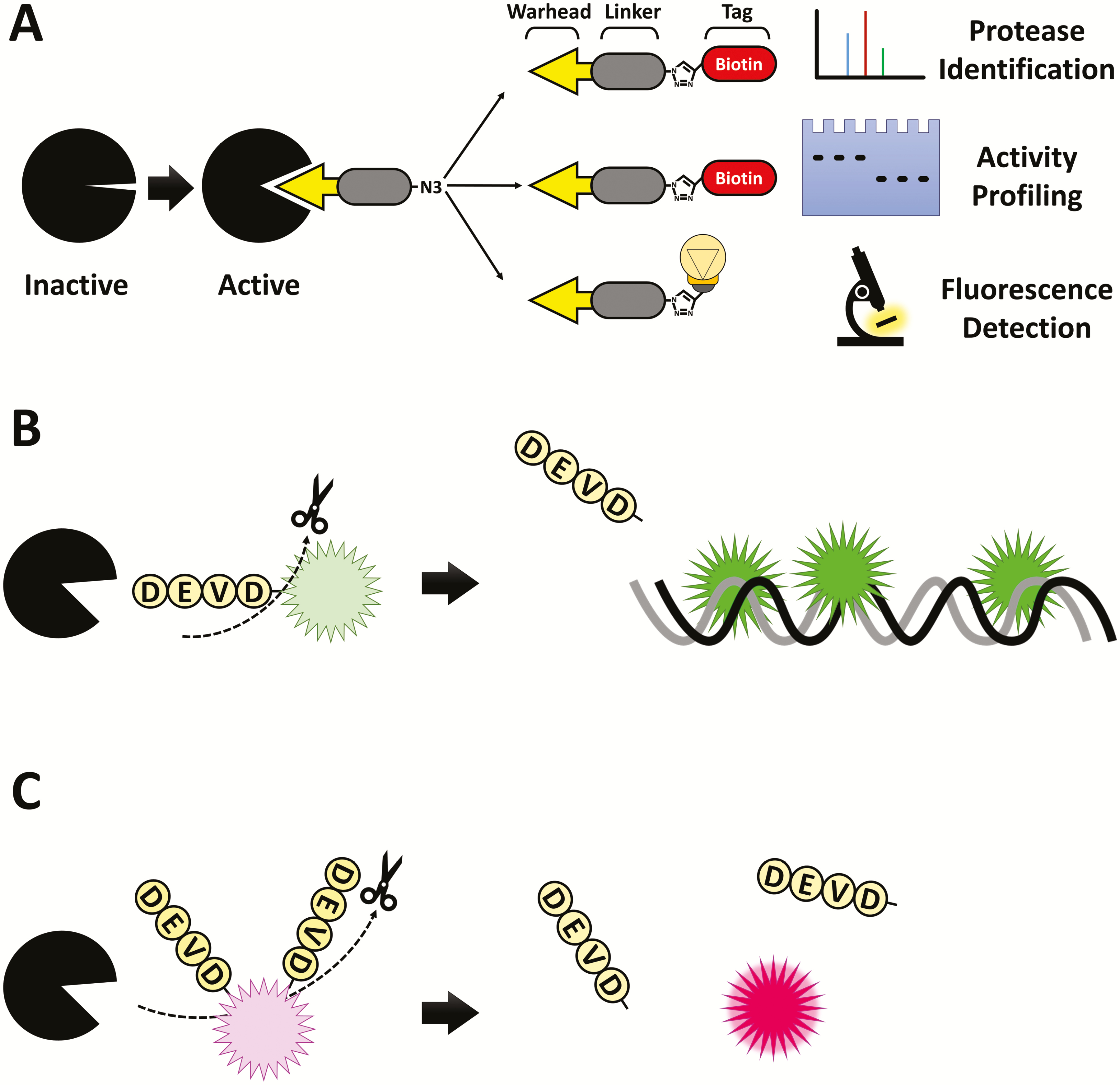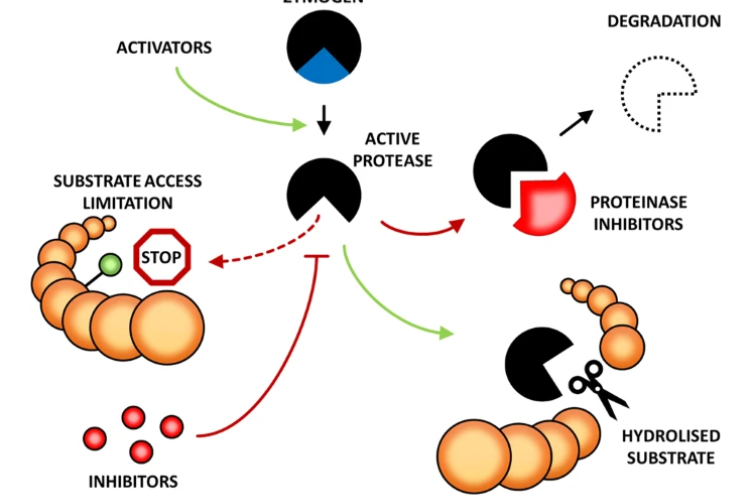Metacaspase Research at the Van Breusegem Lab
Metacaspases (MCs) are a family of cysteine proteases discovered due to their structural similarity to animal caspases. Unlike caspases, however, metacaspases are found exclusively in non-metazoan organisms and have a unique ability to cleave proteins at lysine and arginine residues. MCs are categorized into three types based on their domain architecture: Type-I and Type-II MCs are present in plants, while Type-III MCs are specific to algae.
At the Van Breusegem lab, our research primarily focuses on Type-II MCs, which include 6 out of the 9 known metacaspases in *Arabidopsis thaliana*. Over the years, we have made significant contributions to the field of metacaspase research. Our work includes identifying cleavage sites (Vercammen et al., 2004), substrates (Tsiatsiani et al., 2013; Hander et al., 2019), MC inhibitors (Vercammen et al., 2006; Stael et al., 2023), activation mechanisms (Belenghi et al., 2007; Hander et al., 2019; Fernández-Fernández et al., 2023), and elucidating their functions (Hander et al., 2019; Stael et al., 2023).
Recently, our efforts have turned toward developing advanced tools to monitor metacaspase activity in vivo (Fernández-Fernández et al., 2019; Stael et al., 2022; Fernández-Fernández et al., 2024).
Our metacaspase projects are often embedded in long lasting collaborations with many in the field. The Van Breusegem group is grateful for the many years of productive partnerships.
Metacaspase-related bibliography of the Van Breusegem lab:
Vercammen et al. (2004) - Type II Metacaspases Atmc4 and Atmc9 of Arabidopsis thaliana Cleave Substrates after Arginine and Lysine
10.1074/jbc.M406329200
Vercammen et al. (2006) - Serpin1 of Arabidopsis thaliana is a Suicide Inhibitor for Metacaspase 9
10.1016/j.jmb.2006.09.010
Belenghi et al. (2007) - Metacaspase Activity of Arabidopsis thaliana Is Regulated by S-Nitrosylation of a Critical Cysteine Residue
10.1074/jbc.M608931200
Vercammen et al. (2007) - Are metacaspases caspases?
10.1083/jcb.200705193
Coll et al. (2010) - Arabidopsis Type I Metacaspases Control Cell Death
10.1126/science.1194980
Alvarez-Alfageme et al. (2011) - Potential Use of a Serpin from Arabidopsis for Pest Control
10.1371/journal.pone.0020278
Tsiatsiani et al. (2011) - Metacaspases
10.1038/cdd.2011.66
Tsiatsiani et al. (2011) - Natural substrates of plant proteases: how can protease degradomics extend our knowledge?
10.1111/j.1399-3054.2011.01534.x
Bollhöner et al. (2013) - Post mortem function of AtMC9 in xylem vessel elements
10.1111/nph.12387
Tsiatsiani et al. (2013) - The Arabidopsis METACASPASE9 Degradome
10.1105/tpc.113.115287
Minina et al. (2014) - Plant Metacaspase Activation and Activity
10.1007/978-1-4939-0357-3_15
Stael et al. (2014) - The death of plant cells: from proteases to field applications
10.1038/cdd.2013.190
Wrzaczek et al. (2014) - GRIM REAPER peptide binds to receptor kinase PRK5 to trigger cell death in Arabidopsis
10.15252/embj.201488582
Bollhöner et al. (2017) - The function of two type II metacaspases in woody tissues of Populus trees
10.1111/nph.14945
Lema Asqui et al. (2017) - AtSERPIN1 is an inhibitor of the metacaspase AtMC1-mediated cell death and autocatalytic processing in planta
10.1111/nph.14446
Escamez et al. (2019) - Extracellular peptide Kratos restricts cell death during vascular development and stress in Arabidopsis
10.1093/jxb/erz021
Stael et al. (2019) - Plant proteases and programmed cell death
10.1093/jxb/erz126
Hander et al. (2019) - Damage on plants activates Ca2+-dependent metacaspases for release of immunomodulatory peptides
10.1126/science.aar7486
Fernández-Fernández et al. (2019) - Caught green-handed: methods for in vivo detection and visualization of protease activity
10.1093/jxb/erz076
Minina et al. (2020) - Classification and Nomenclature of Metacaspases and Paracaspases: No More Confusion with Caspases
10.1016/j.molcel.2019.12.020
Stael et al. (2022) - Detection of Damage-Activated Metacaspase Activity by Western Blot in Plants
10.1007/978-1-0716-2079-3_11
Pitsili et al. (2023) - A phloem-localized Arabidopsis metacaspase (AtMC3) improves drought tolerance
10.1111/nph.19022
Stael et al. (2023) - Structure–function study of a Ca2+-independent metacaspase involved in lateral root emergence
10.1073/pnas.2303480120
Fernández-Fernández et al. (2023) - Mechanisms controlling plant proteases and their substrates
10.1038/s41418-023-01120-5
Kacprzyk et al. (2024) - Roadmap for the next decade of plant programmed cell death research
10.1111/nph.19709
Fernández-Fernández et al. (2024) - Shedding light on plant proteolysis: genetically encoded fluorescent sensors as tools for profiling protease activities
TBA
